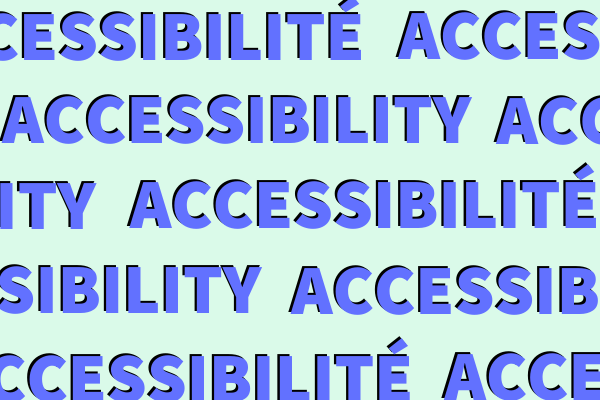Ongoing
Our Commitment
Artexte is committed to offering a physical and digital environment that is accessible to everyone. We are working to improve accessibility in order to facilitate the use of our website and digital content for Deaf or disabled visitors [1], in order to offer equal access to our collection, research and programming.
We recognize the intersection of ableism with other forms of oppression, and that the fight for justice and equal accessibility for Deaf and Disabled persons is linked to movements of resistance and action against all forms of systemic discrimination.
Accessibility Standards for the Web
Our website is currently only in partial compliance with the Web Content Accessibility Guidelines recommended by the World Wide Web Consortium (W3C), which are recognized as an international standard in terms of Web accessibility [2]. Far from complete, the task of making all of our services accessible is an ongoing process and we are working to ensure that our future content conforms progressively to any standards that we do not currently satisfy.
Your Feedback is Important to us
We welcome your feedback in order to improve the accessibility of our platforms. Please contact us if you have suggestions or resources to share that can help us make our digital content more accessible.
To contact us :
2 rue Sainte-Catherine Est, salle 301
Montréal, Québec H2X 1K4
514-874-0049
Physical Accessibility
Artexte is a free, public space open to everyone. Our spaces, located on the 3rd floor, are accessible by elevator and have restrooms that can accommodate wheelchairs.
[1] “This expression refers to people who identify as Deaf or disabled, people living with a disability, or functional limitations, people who are hard of hearing, deafened, deaf-blind, Usher deaf, neurodiverse or neuroatypical, people who have a cognitive or an intellectual disability, people with mental illness, or mental health issues, people who identify as mad, as having mixed abilities or as anything else not listed here” (Canada Council for the Arts, “Deaf and Disability Arts Practices — Research Report” (2020), 8).
[2] These measures include but are not limited to, alt-text and image descriptions (for screen readers), captions for virtual events, verification of colour schemes and contrasts, and more.
